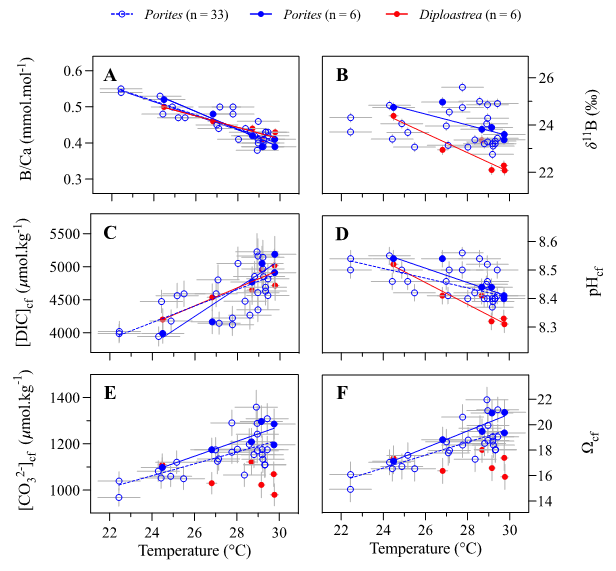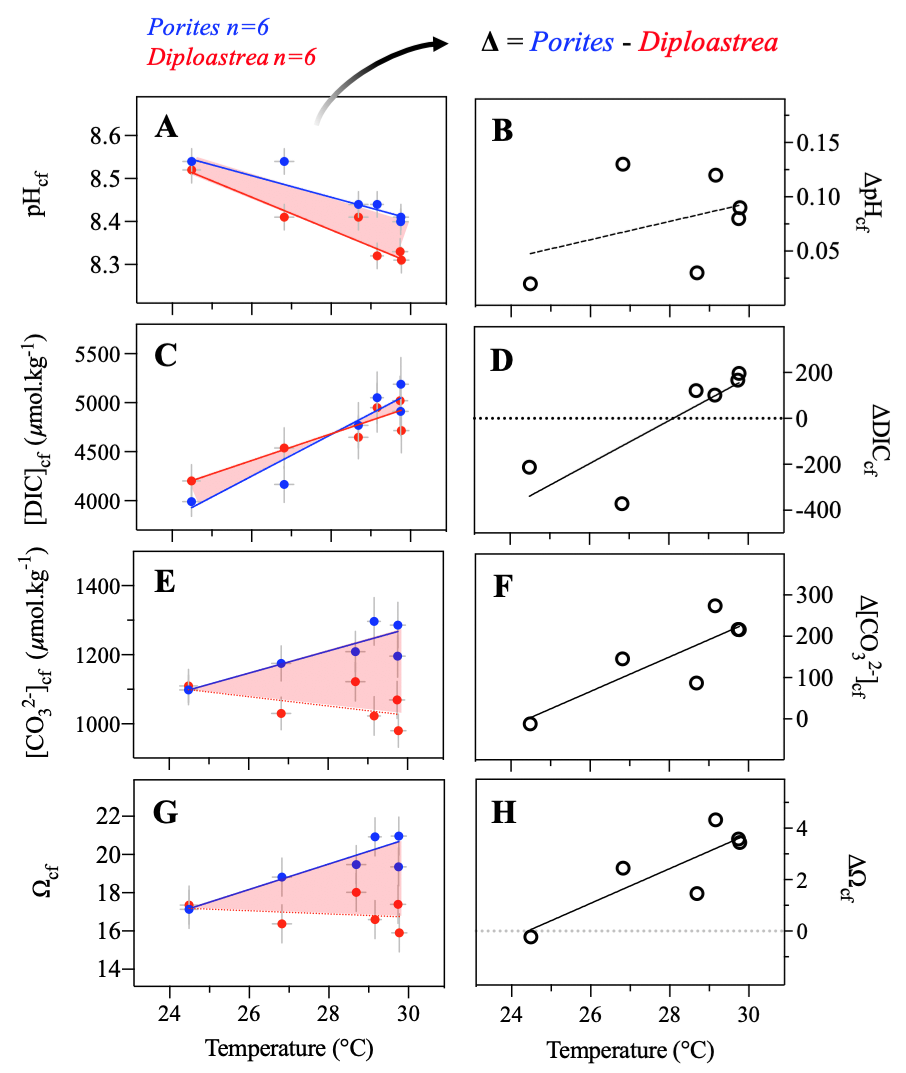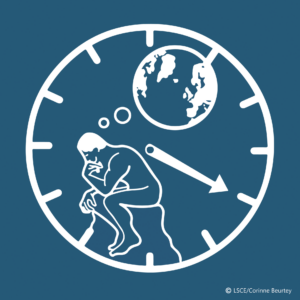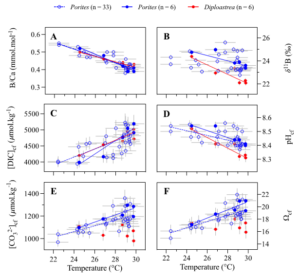Les projections climatiques menaçant la survie future des coraux pierreux et leur domination en tant que bâtisseurs de récifs tropicaux, il est essentiel de comprendre la capacité d’adaptation des coraux aux changements climatiques en cours. La médiation biologique de la chimie des carbonates du fluide de calcification des coraux est un élément fondamental pour évaluer la réponse des coraux aux menaces globales. L’expédition Tara Pacific (2016-2018) a permis d’étudier les schémas de calcification des coraux existants dans l’ensemble de l’océan Pacifique. Des carottes de colonies des genres massifs Porites et Diploastrea ont été prélevées dans différents environnements afin d’évaluer les paramètres de calcification des coraux constructeurs de récifs à longue durée de vie.

A l’échelle du bassin de l’Océan Pacifique, nous montrons que les deux genres augmentent systématiquement le pH de leur fluide de calcification et le carbone inorganique dissous pour obtenir une précipitation efficace du squelette. Cependant, alors que les coraux Porites augmentent l’état de saturation en aragonite du fluide de calcification (Ωcf) à des températures plus élevées pour améliorer leur capacité de calcification, Diploastrea montre un Ωcf homéostatique stable à travers le gradient de température du Pacifique. Ainsi, la mesure dans laquelle Diploastrea réagit au réchauffement et/ou à l’acidification des océans n’est pas claire, et il convient de se demander si cela est bénéfique ou préjudiciable à la survie future de ce genre de corail.

Reference: Marine Canesi, E. Douville, P. Montagna, M. Taviani, J. Stolarski, L. Bordier, A. Dapoigny, G. E. H. Coulibaly, A.-C. Simon, M. Agelou, J. Fin, N. Metzl, G. Iwankow, D. Allemand, S. Planes, C. Moulin, F. Lombard, G. Bourdin, R. Troublé, S. Agostini, B. Banaigs, E. Boissin, E. Boss, C. Bowler, C. de Vargas, M. Flores, D. Forcioli, P. Furla, E. Gilson, P. E. Galand, S. Pesant, S. Sunagawa, O. Thomas, R. Vega Thurber, C. R. Voolstra, P. Wincker, D. Zoccola, S. Reynaud (2023). Differences in carbonate chemistry up-regulation of long-lived reef-building corals. Scientific Report, 41598. DOI : 10.1038/s41598-023-37598-9


